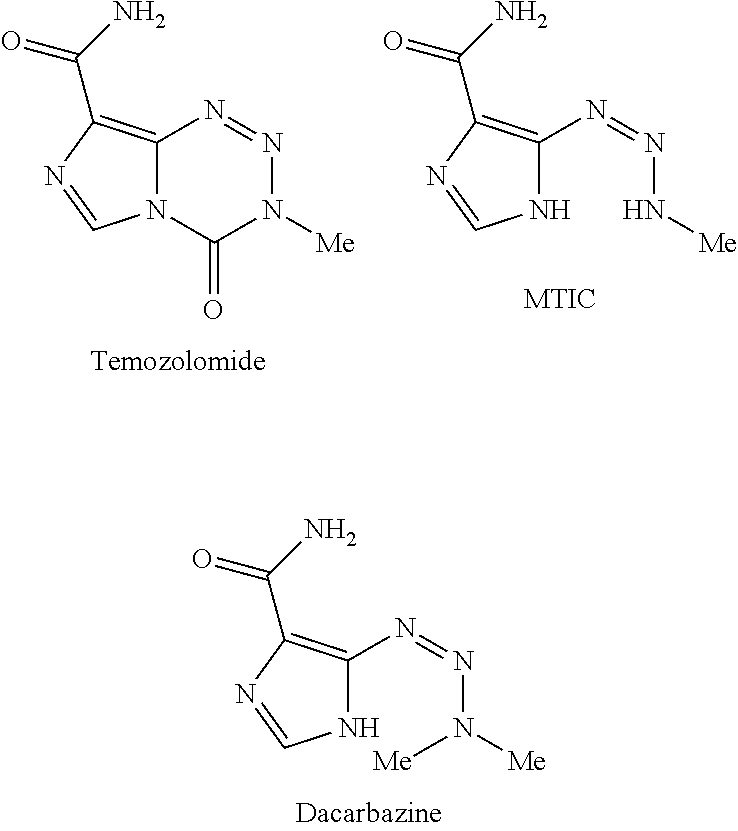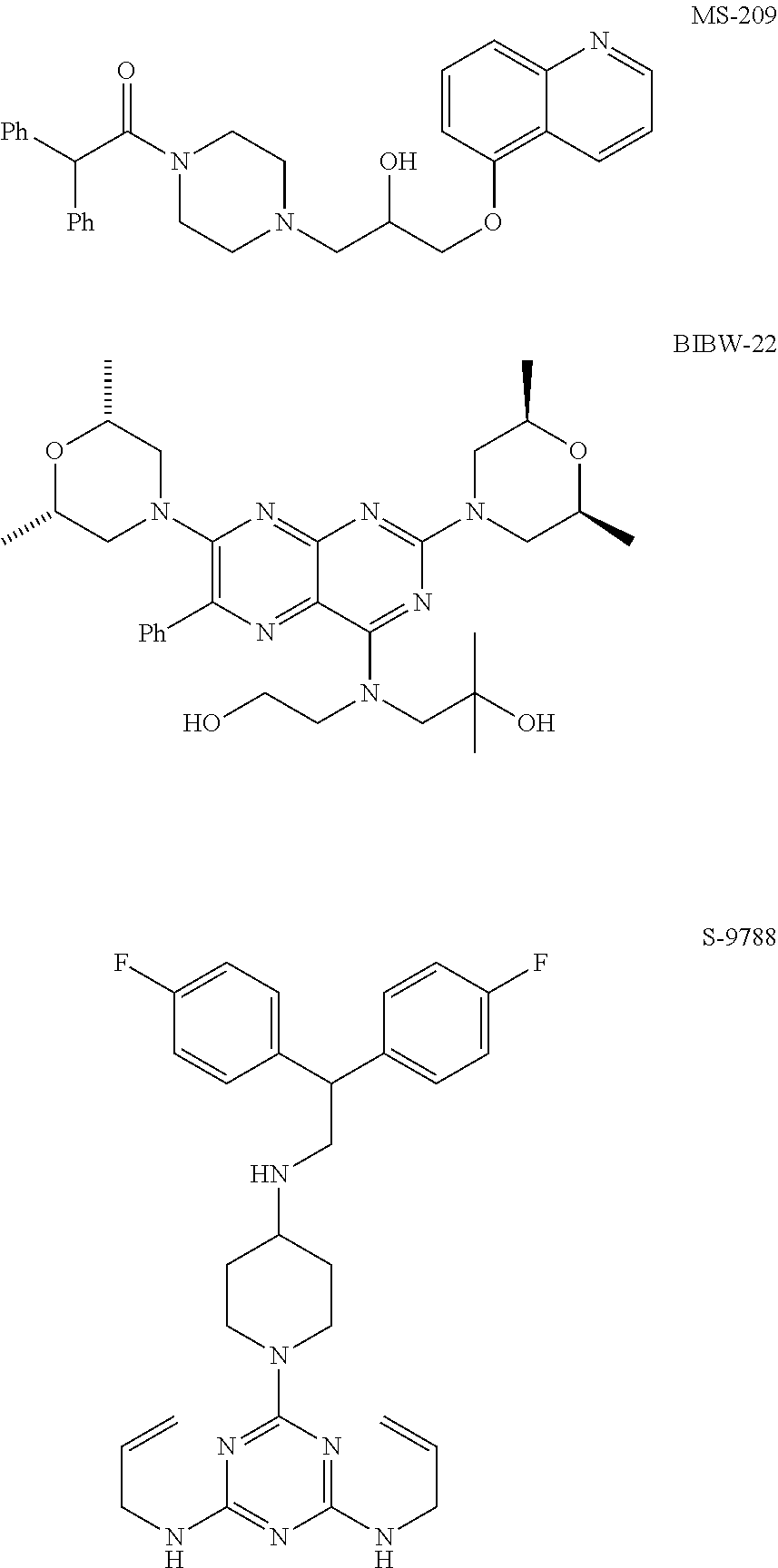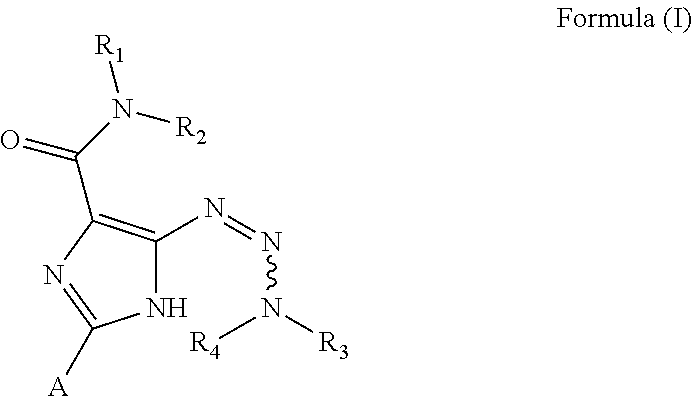Use of CNS penetrating anticancer compounds for the treatment of protozoal diseases
a protozoal disease and anticancer compound technology, applied in the field of protozoal disease treatment, can solve the problems of severe side effects, unsatisfactory treatment of african trypanomiasis, and ineffective use of eflornithine against the rhodesian form of sleeping sickness,
- Summary
- Abstract
- Description
- Claims
- Application Information
AI Technical Summary
Benefits of technology
Problems solved by technology
Method used
Image
Examples
examples
Compound Availability
[0128]All compounds mentioned in the example section can be purchased from commercial providers, e.g., Sigma or Sequoia Research.
Sleeping Sickness: In Vitro Screening Model
Parasite Cultures
[0129]Three strains of Trypanosoma brucei spp. are used in this study: (a) T. b. rhodesiense STIB 900 (a clone of a population isolated in 1982 from a patient in Tanzania), which is known to be susceptible to all currently used drugs; (b) T. b. gambiense STIB 930 (a derivative of strain TH1 / 78E (031), isolated in 1978 from a patient in Ivory Coast), which is known to be sensitive to all drugs used; and (c) T. b. brucei STIB 950 (a clone of a population isolated in 1985 from a bovine in Somalia), which shows drug resistance to diminazene, isometamidium and quinapyramine.
[0130]Bloodstream form trypomastigotes of the strains (a) and (c) are maintained in Minimal Essential Medium (MEM) with Earle's salts supplemented according to Baltz et al. (EMBO J. 4, 1273-1277, 1985) with 25 m...
PUM
| Property | Measurement | Unit |
|---|---|---|
| time | aaaaa | aaaaa |
| time | aaaaa | aaaaa |
| time | aaaaa | aaaaa |
Abstract
Description
Claims
Application Information
 Login to View More
Login to View More - R&D
- Intellectual Property
- Life Sciences
- Materials
- Tech Scout
- Unparalleled Data Quality
- Higher Quality Content
- 60% Fewer Hallucinations
Browse by: Latest US Patents, China's latest patents, Technical Efficacy Thesaurus, Application Domain, Technology Topic, Popular Technical Reports.
© 2025 PatSnap. All rights reserved.Legal|Privacy policy|Modern Slavery Act Transparency Statement|Sitemap|About US| Contact US: help@patsnap.com



